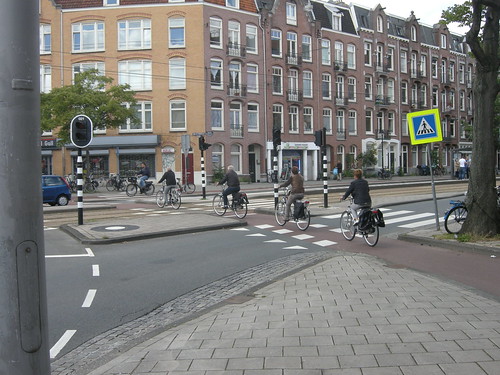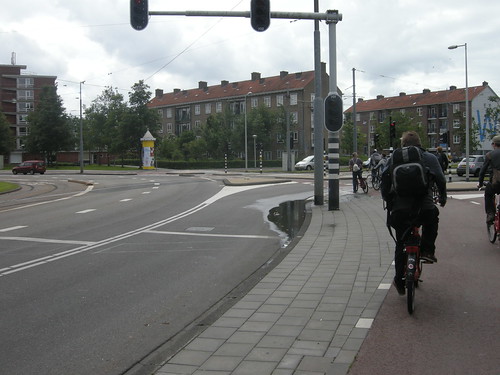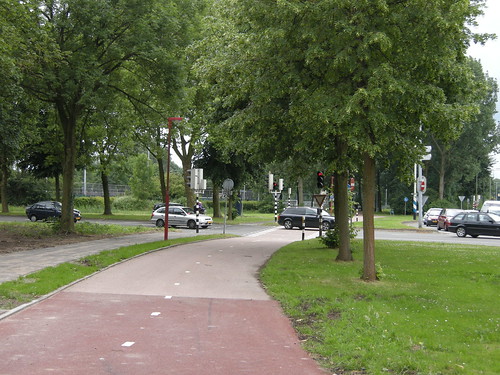Roundabouts
Roundabouts in the UK are more dangerous to cyclists than to any other kind of road user, and large roundabouts in particular are very off-putting to new cyclists. By contrast, in the Netherlands, they are safer than 4-way junctions for cyclists. SWOV estimate that replacing a standard intersection with a roundabout reduces casualties by 46%.1
Ideally we would recommend a separated perimeter track around a roundabout, although this may take some changes to UK design standards. (Transport for London are trialling this Dutch design at the Transport Research Laboratory, with a view to implementing it in London.) This design has been shown to be much safer than having bikes either mix with traffic on the roundabout, or circulate on a lane around the edge of the roundabout.
In rural areas, bikes generally give way to cars coming on and off the roundabout (with a waiting area, mid-carriageway). In urban areas, drivers should give way to cyclists on the track, both on entry and exit (this is implemented on about 60% of urban roundabouts).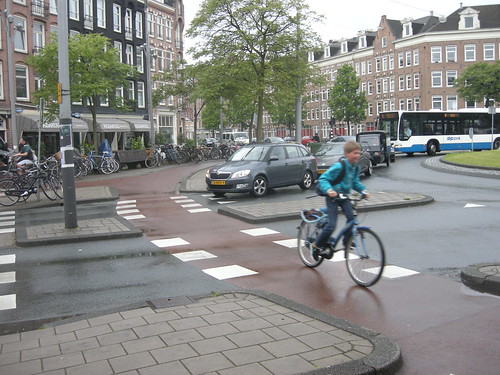
To UK eyes, this can look quite dangerous, especially when drivers are expected to give way to cyclists as they enter or exit the roundabout. This should be mitigated by 'continental geometry'2, only having a single exit and entry lane, and 5m between the roundabout and the crossing track, which allows drivers space to wait for bikes on exit (and to wait beyond the track on entry to the roundabout) so they don't have to worry about roundabout traffic and bikes at the same time. Clearly marked pedestrian crossings usually run alongside the bike tracks, making both more visible, and reinforcing the priority of crossing traffic.
If separated tracks aren't possible, then a roundabout should be small and tight (continental geometry again) and only a single lane. We would never recommend the normal UK arrangement of shared use footways (pavements) with two-stage pig-penned toucan crossings. However, combined cycle and zebra crossings - or single-stage direct toucan crossings - might be acceptable as a half-way house.
Large, high-capacity Dutch roundabouts for cars are often of a 'turbo' design, with dedicated entry and exit lanes, which do not change for drivers, giving rise to 'spiral' markings. Cyclists are never expected to cycle on these designs, usually found in rural or peripheral areas. Perimeter tracks around these kinds of roundabouts are signalised at the crossing points, to reduce danger (typically the speed of motor vehicles is high).
In other locations, these large roundabouts can (or should) be bypassed completely, either by underpasses or bridges. Underpasses have the benefit of being less steep, and offer less loss of momentum, but must be wide and open, to increase the sense of social safety.
Bridges can be more attractive, and offer a greater sense of social safety, but come at the cost of steeper gradients, and are generally more expensive than an underpass. However, they can be done well, even in the UK. For example, this bridge near Dumfries spans a three-lane roundabout joining the A75 and A76 and is no steeper than many of the surrounding roads.
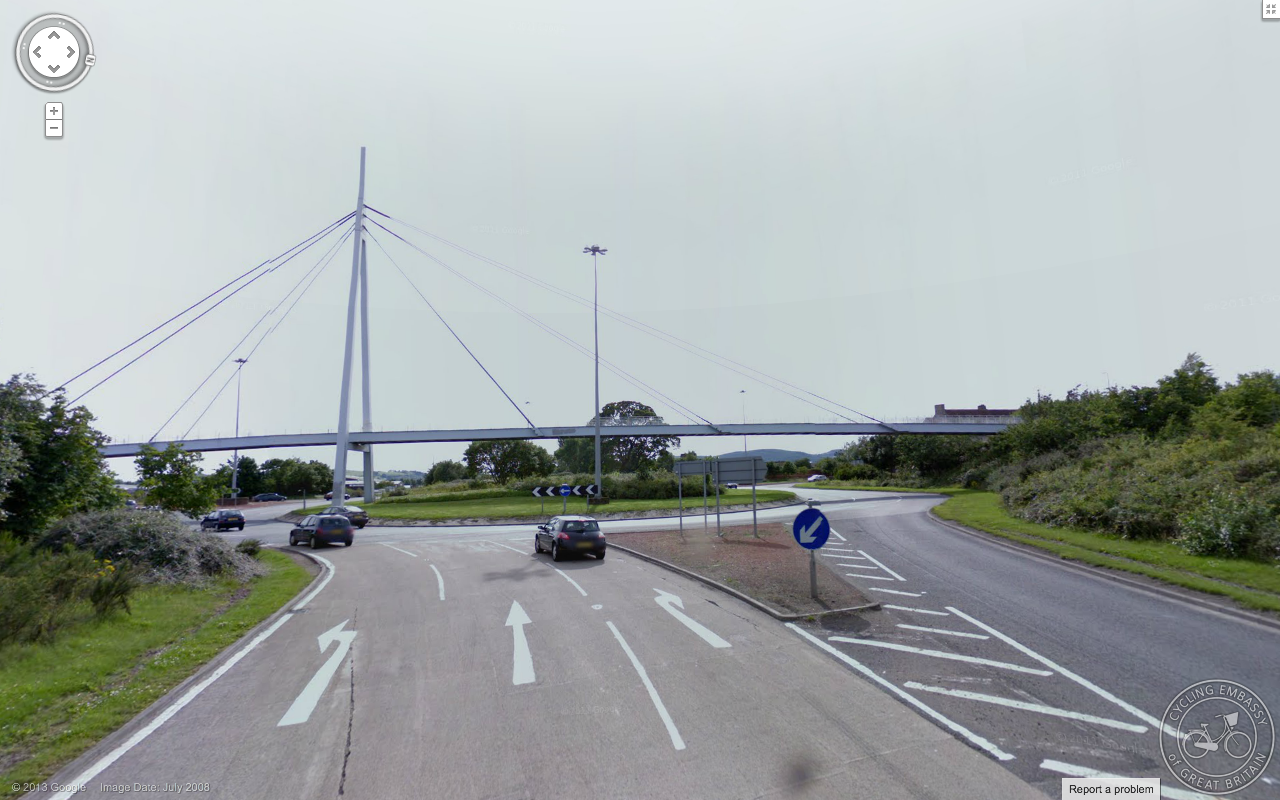
Larger roundabouts - with either signalised bicycle crossings, or underpasses or bridges - also employ two-way tracks to make bicycle journeys simpler and easier, like around this motorway intersection roundabout in Utrecht.

